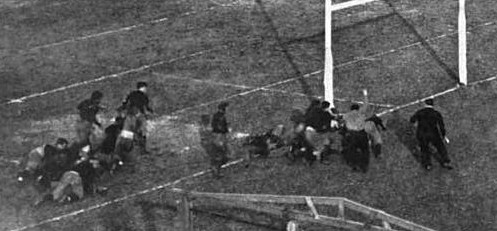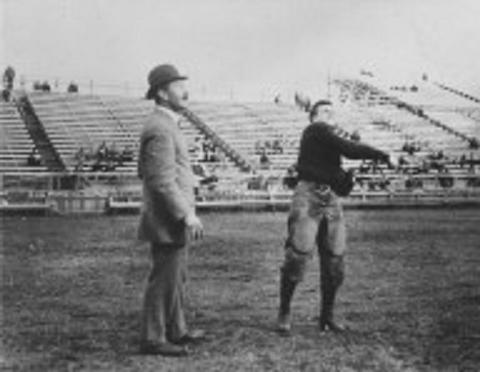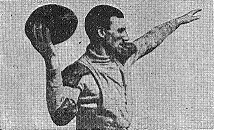
32,000 fans gathered in New Haven to watch 8-0-1 Yale play 10-0 Harvard


| Wesleyan (2-4-1) | 21-0 | |
| Syracuse (6-3) | 51-0 | #17 |
| Springfield (1-5-3) | 12-0 | |
| Holy Cross (4-3-1) | 17-0 | |
| Penn State (8-1-1) | 10-0 | #4 |
| Amherst (3-3-1) | 12-0 | |
| at Army (3-5-1) | 10-6 | |
| Brown (6-3) | 5-0 | #16 |
| at Princeton (9-0-1) | 0-0 | #2 |
| Harvard (10-1) | 6-0 | #3 |

| Villanova (3-7) | 24-0 | |
| Stevens (3-3-2) | 22-0 | |
| Washington & Jefferson (9-2) | 6-0 | #19 |
| Lehigh (5-5-1) | 52-0 | |
| at Navy (8-2-2) | 5-0 | #7 |
| Bucknell (3-4-1) | 32-4 | |
| (NYC) Cornell (8-1-2) | 14-5 | #6 |
| Dartmouth (6-3-1) | 42-0 | |
| at Army (3-5-1) | 8-0 | |
| Yale (9-0-1) | 0-0 | #1 |
| Yale 9-0-1 | Princeton 9-0-1 | ||||||||||||||||||||||||||||||||||||||
|---|---|---|---|---|---|---|---|---|---|---|---|---|---|---|---|---|---|---|---|---|---|---|---|---|---|---|---|---|---|---|---|---|---|---|---|---|---|---|---|
|
|
||||||||||||||||||||||||||||||||||||||
 St.
Louis went 11-0, and outscored their opponents 407-11 (leading the
nation in scoring), but their schedule was not nearly tough enough to
merit national championship consideration. They played only 2 major
schools, beating 2-3 Iowa 39-0 and 7-2-2 Kansas 34-2.
St.
Louis went 11-0, and outscored their opponents 407-11 (leading the
nation in scoring), but their schedule was not nearly tough enough to
merit national championship consideration. They played only 2 major
schools, beating 2-3 Iowa 39-0 and 7-2-2 Kansas 34-2.| 1) Parke Davis | 4.2 |
| 2) Billingsley (math system) | 4.12 |
| 3) Houlgate (math) | 4.06 |
| 4) Helms | 3.7 |
| 5) National Championship Foundation | 3.2 |